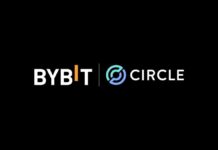
The Elite University of Cambrige and the credit card company VISA have jointly carried out the Global Cryptocurrency Benchmarking Study. They surveyed nearly 150 companies and individuals. The result is a unique overview of the areas of exchanges, wallets, payment and mining.
The study starts with a rough overview of the entire market of cryptanions, which at the time of writing the study still had a value of 27 billion dollars (today it is around 70).
The authors note that in addition to the largely innovative old coins from 2013, some innovative further cryptos such as Ethereum, Dash, Monero, Litecoin and Ripple have become firmly established. Even though the market share of Bitcoin has declined markedly since the start of 2016, Bitcoin remains the most widely used currency for payments. With a clear distance.
Subsequently, the study of the global bitcoin economy is devoted. The geographical distribution reveals that wallets are mainly located in North America and Europe and Miner, mainly in North America and Asia. Exchanges appear to be well represented in all parts of the world.
The authors then try to give an estimate of Bitcoin users worldwide. They acknowledge that this task has their problems: “… because an individual can have multiple wallets from different vendors at the same time. Worse, a single user can have multiple wallets and exchange accounts for different cryptanages and therefore be counted several times. In addition, many people have centralized wallet, stock exchanges or payment platforms that merge the credit in a limited number of wallets or addresses, making the image more complicated. ”
The authors even go so far as to say that it is impossible to give a precise answer to the question of how many cryptanalysis users there are. However, you are trying to find an upper and a lower shaft. To this end, they use a report from the Boston Federal Reserve, according to which 0.87 per cent of all US consumers in 2015 indicated that they had already used bitcoins, which alone amounts to 2.8 million users in the USA. According to calculations by Coinbase, 10 million people in the world have had Bitcoins in 2016.
Based on the available data as well as the results of the survey with nearly 150 companies, the researchers calculate that there are 2.9-5.8 million active users of cryptic diseases. What is quite a lot …
According to these more general information, the authors devote themselves to the four areas of the bitcoin economy: exchanges, wallets, payment and mining. We are looking for some interesting information from all areas.
exchanges
By far the largest and most important area of the bitcoin economy are exchanges. They are the most numerous and employ most of the employees. As an infographic shows, most exchanges are based in Europe, although the volume of the euro is a relatively small share of Bitcoin world trade.
Among the exchanges, the trend is towards multi-trade. Most exchanges deal with several cryptos, many also offer advanced wallet or payment services. These trends can be observed more strongly in larger exchanges than in smaller ones.
Also, the larger exchanges tend to outsource external service providers for the security of systems and wallets. Accordingly, the smaller exchanges are more afraid of losing customer bits due to hacks or frauds, which also increases the share of security spending, while the larger exchanges are more concerned about future regulation.
Wallets
Wallets appear to be an export product for North American and European bitcoin companies: 81 percent of the developers are on these two continents, while only 61 percent of the users come from these regions. Most wallets are from the USA, followed by the UK, Germany and Switzerland.
Large wallet providers, such as blockchain.info and Coinbase, make up a significant part of network traffic. Without more detailed data, the study finds that transactions of large wallets represent 10-25 percent of the transaction volume, with a recent downward trend.
An interesting observation is that the users seem to prefer wallets, the producers of which are regionally close: US users use rather Wallets from the USA, European users from Europe, and Chinese users from China. It is possible that the need to enjoy court proximity and legal computability in the event of the case.
Regarding security, a trend – which is not quite insignificant – has developed in such a way that the wallets can not store the private keys of the users themselves and thus can not access the credit balances. More than 70 percent of the wallet providers allow the user to manage their private keys themselves. This is both safe for the user – since he does not have to trust the provider – as it also releases the provider from regulatory and other obligations that he would have to assume as a custodian of money.
Among the popular features in the wallet are an integrated exchange of money – whether through their own P2P markets such as on mycelium, or through an integration of Shapeshift to exchange cryptos – which is not surprising since this is one of the few methods , With which Wallets can earn money. Other popular features include connecting to credit card or mobile phone, a key recovery service, the ability to send bitcoins to email addresses, and integrated mixing. Again, the study notes, there is a trend to bundle different services on one platform. Wallets and exchanges merge in part.
The Bitcoin News
[newsletter_form lists="1"]










